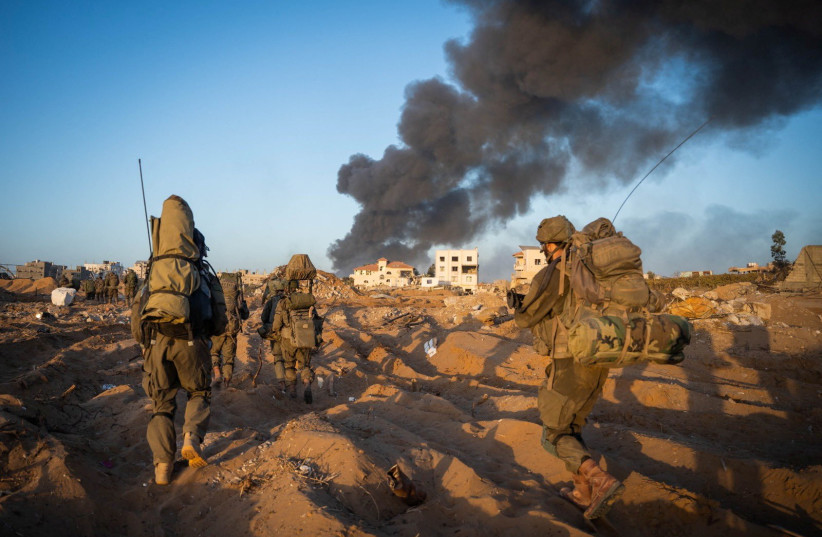IDF attacks have broken effectiveness of 10 of 24 Hamas battalions
IDF attacks have broken the effectiveness of 10 out of 24 Hamas battalions, says the military.
For the first time since the start of the war, the IDF on Monday provided its official estimates of the size and make-up of what Hamas’s forces were on the eve of the war which started on October 7.
In addition, the IDF gave its estimate of the impact it has had on Hamas’s forces through around five weeks of air strikes and two-and-a-half weeks of a ground invasion.
According to the IDF, Hamas started the war with 30,000 men who were split into five regional brigades, which themselves split into 24 battalions, which themselves split into 140 companies. Each battalion had around 1,000 plus men.
Prior unofficial estimates had set Hamas’s forces as between 15,000 to 40,000.

Hamas and Islamic Jihad’s dwindling numbers
Further, prior unofficial estimates before the conflict with Islamic Jihad in May of this year had set its forces at around 10,000.
IDF sources indicated that on the eve of the war, Islamic Jihad forces had shrunk somewhat from the 10,000 number, possibly due to losses this past May.
Each Hamas brigade is divided into specific skill sets, including those who specialize in: firing anti-tank missiles, sharpshooters, engineers, aerial units (drones or motorized hang gliders, but no aircraft), naval units, and maneuvering battle units.
In addition, each battalion has regional command centers and more local smaller-scale positions which are the focal point of directing the battalion’s operations.
Two examples that the IDF gave of Hamas battalions whose effectiveness has been harmed were the Shaati and the al Daraj-Tuffah battalions.
According to the IDF, the Shaati battalion lost 200 men, including many battalion and company commanders as well as most of its battalion-level and lower-level command centers and positions.
IDF sources said that in the time between initial IDF fighting with the Shaati battalion until several days later, there was a notable change and loss of effectiveness.
Sources said that at first, there was a clearly synchronized battle plan by Hamas to ambush Israeli forces, using a variety of tactics and specialized units.
However, once several Hamas commanders were killed by the IDF, the coordination broke down, and the various companies ceased to operate in unison, sometimes even only very small groups of Hamas forces working together, with no awareness or connection to other Hamas forces’ efforts.
In addition, IDF sources said that even when some battalions tried to replace lost commanders with commanders from other battalions, the loss of familiarity and expectations showed and the battalion did not return to their former effectiveness levels.
This has been crucial for the Shaati battalion because it is responsible for the ShifaHospital area where Hamas’s top headquarters is situated,
A similar story came from the IDF regarding the al Daraj-Tuffah battalion, which has lost over 260 men, and commanders at all levels.
All of the above are the first in-depth data the IDF has given about its progress, other than that it has killed several thousand Hamas forces to date.
However, multiple top IDF sources have expressed doubt about Hamas being close to “breaking” even as publicly top political and IDF officials say it has lost control of northern Gaza.





Comments are closed.